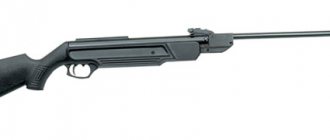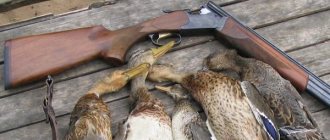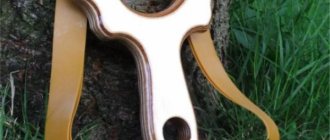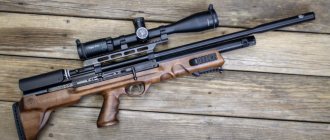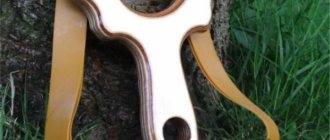A tourist knife should be suitable for kitchen work, as well as cutting branches and wood chips for the fire, and other household needs that may arise in the forest, on the river or in the mountains. Therefore, tools can be universal, for survival, fishing, picnic, they all have differences.
But there is also something in common: the steel of the blade has a hardness of no higher than 58-60 HRC, its click-point, drop-point shape, a simple, comfortable, narrow handle made of wood and thermoplastic. Knives for tourists can also be folding, including those with several blades, or monolithic.
Functions of a tourist knife
Not a single hike or tourist trip is complete without a knife.
For a hiking trip, you will need a universal model that will help you out in any situation. The knife should be light, reliable and perform a number of functions:
- for slicing bread, fruits, vegetables;
- fish cutting;
- mushroom picking;
- cutting wood and starting a fire;
- opening canned food;
- if necessary, protect from predatory animals;
- making other instruments;
- for the construction of a shelter and its repair;
- providing necessary medical care.
Tools
Pocket chain saw “Fornel”
The high-performance folding saw is a real hit among tourists. It is light and compact, it is most convenient to use it with two people - this way you can cut even thick trees. In most situations, a chainsaw can easily replace an axe.
Weight – 100 g.
Fornel pocket chain saw 949 RUR
Fornel pocket chain saw
Add to cart
Ax Helios
In situations where there is no strict limit on the weight of equipment, it is good to have at least one small ax per group. Yes, cutting a thick log in half will require more effort and time than using a saw, but cutting branches is convenient only with an ax.
Weight – 500 g.
Ax Helios rubber handle 500g 940 ₽
Ax Helios rubber handle 500g
Add to cart
Multitool Victorinox SwissTool spirit XC plus ratchet
38 useful tools – plus Swiss reliability in one! This multitool can help out in the most unpredictable situations. They can straighten the aluminum poles of a tent or the teeth of climbing crampons, or unscrew a jammed carabiner. And multitools are simply irreplaceable where any equipment is used: from a bicycle to a snowmobile. Therefore, we recommend adding this useful tool to your camping gear.
Weight – 400 g.
-43%
Multitool Victorinox SwissTool spirit XC plus ratchet 105mm silver RUB 19,899
— 8 640 ₽
11 259 ₽
Multitool Victorinox SwissTool spirit XC plus ratchet 105mm silver
Add to cart
Main characteristics of a camping knife
Knives intended for tourism consist of several parts, are made of different types of material and have a variety of shapes. Let's consider the main elements of such a tool and what requirements are placed on them.
Size
Types of knives that tourists take on a hike - regular or as part of a multitool.
Choose a medium-sized product - 4-6 inches long, because it is too small or, on the contrary, large, and is not intended for all types of work. Small is suitable for small work, large for heavy work, medium will be universal.
Blade
Different types of steel are used to make this part. I do not recommend choosing a product made of expensive metal for a hike. Give preference to stainless steel, for example, 95×18 or carbon steel. The second option is less practical, since carbon steel is susceptible to corrosion, although it has a more aggressive cut than stainless steel. Steel type 95x18 is considered good, but expensive. If you handle such a tool with care, you can purchase an expensive powder steel blade.
Follow the main rule - choose a tool with a medium degree of steel hardness so that it is not too brittle and there are no problems with sharpening in field conditions. Also, steel that is too soft will not work as the cutting edge will not be sharp enough.
The degree of hardness of the blade can be determined using the Rockwell scale:
- 60-65. The blade is very fragile with a practical and high-quality cutting edge. Intended for cutting only; strong impacts may cause chips.
- 58-60. It has a well-preserved edge and is intended for various jobs on the go.
- 52-58. This is a blade of increased hardness, but the edge dulls very quickly. Such models are often used in axes and knives for chopping meat.
Knife blade shape
There are different blade shapes on knives, but if we talk about a backpacking trip, then ideally only two types are suitable:
- Concave (finca) with a thinned tip. Suitable for small and uncomplicated work. If you sharpen the curved section at the top, it can be used for hunting.
Every tourist takes a knife with him on a hike; this is equipment that there is no question about whether to take it or not. - Spear-shaped. This is a standard shape with a lowered butt line. It is usually used in pocket models. Advantages - very practical, made of durable metal and thick. It is suitable for fine work that requires a sharp tip.
A reliable knife is a guarantee of your survival in possible extreme situations
It is difficult to say exactly which knife is better, since it all depends on what it will be intended for. I prefer the concave shape because I do a lot of fine work, so the final choice is up to you.
If you need a knife for carving and stripping, it is best to purchase one with a wavy or serrated blade that will cut easily and quickly. But keep in mind that sharpening such a tool in the field will be problematic.
Knife sharpening type
There are several types:
- Smooth. With this type, the tip of the blade tapers equally on both sides.
- Sword. Sharpening begins a little further on the blade than with a straight sharpening. This type is considered one of the best for hiking, and the sharp cutting edge retains its shape for a long time.
- Complex. This type is valued for two qualities - the blade remains sharp for a long time and cuts well due to its very sharp edge. Further, the sharpening angle expands.
- Concave. It has the sharpest cutting edge, instantly penetrates into any objects. But there is one drawback - it gets dull quickly.
- Convex. This option is suitable for cutting. It has a fairly large cutting edge, which is the opposite of the concave type of sharpening.
- Single-sided - resembles a chisel and is sharpened only on one side.
When choosing a knife for a hike, it is important to take into account not only its versatility, but also the ability to give it maximum sharpness using available tools. Products with a curved nib are distinguished by good sharpness, but it will be difficult to sharpen them on a camping trip. Profiles with smooth edges remain sharp longer and are easy to sharpen.
Folding or monolithic
There are two models that are suitable for hiking, each with a different purpose:
- Folding multifunctional. It copes well with many simple tasks on a hike, and is also small in size, so it is convenient to carry in your pocket. In this product, the blade is completely hidden behind the handle, and there is a locking stop that protects your hands during use. In addition, it is equipped with additional elements for opening bottles, canned food, etc. It has one drawback - it can easily break.
A folding knife is convenient for traveling - Many people believe that a product with a fixed blade is more reliable and durable than a folding tool, because their blade is completely hidden in the handle. The unfoldable one performs a number of difficult tasks - it is suitable for preparing firewood, turning bones, and carving wood. With this tool you can clean fish, cut meat, and vegetables. The fixed blade model is often called the military type. Check what kind of shank the knife has (it continues the blade). There are three options - with a partially hidden, with a “mouse tail” and a molded handle to the end. It is the third type of shank that is considered the most durable and reliable.
Fixed blade knife
Lever
To make this element, different materials are used:
- plastic - has increased strength and does not deteriorate under the influence of water and moisture;
- a wooden or leather handle gives a beautiful look and provides a strong grip, but requires constant care;
- made from bones and horns - durable and give a beautiful finish;
- rubber - provides good grip in wet weather.
It’s difficult to say which material is better, but when choosing, first of all you need to pay attention not to the beautiful and bright appearance, but to ease of use. The handle should be comfortable for your hand and lie in it like a cast one. With prolonged use, it does not create abrasions.
The method of attachment to the blade plays a big role - there should be a small protrusion between the handle and the feather. This will prevent the knife from slipping out of your hands and protect your fingers from cuts. As practice shows, many people prefer one-sided defense, since it makes it possible to use different grips.
The handle for the tourist knife is equipped with a hole for a loop. It is put on the hand for easy holding of the instrument.
Design options
When choosing a utility knife, you need to think about which option will be the most functional. What is more important: the ability to fold, taking up minimal space, or the reliability of a design made of durable material? Weighing all the pros and cons of each option, we get the following:
| Characteristics | Jackknife | Whole | |
| Collapsible | Non-separable | ||
| Ease of storage | + | + | — |
| Ease of transportation | + | + | — |
| Washing and hygienic treatment | Inconvenient | Comfortable | Comfortable |
| Ability to cut under load | _ | _ | + |
| Long term use | Slightly | Slightly | For a long time |
| Ability to work on wood, iron, dense plastic | — | Rarely | + |
| Blade fixation | Not always | Not always | + |
| Strength of connection between handle and blade | +- | +- | + |
| Blade length | Less than 90 mm | Up to 40 cm | Any |
| Weight | Less than 200 g | 200 g or more | 200 g or more |
Sheath for a tourist knife
For safety, an unused knife should be sheathed.
When buying a tool with a fixed blade, you should immediately select a sheath for it and be sure to be of good quality. They are often sold complete with a case. Choose a Kydex or leather sheath to protect your hands and knife from damage.
Primary requirements:
- Has a strap that doesn't tighten
- there should also be a strap in the handle area that will prevent the knife from falling out
- it would be good if the sheath had an additional compartment for a sharpening stone
It is not recommended to store a wet instrument in a sheath, as this may lead to corrosion. Before each installation, be sure to make sure it is dry.
Handle Features
The features of the handle of a knife used in natural conditions are no less important. If you choose it based on visual principles, you can make a serious mistake. Thus, aesthetic horn, leather or natural stone material, despite its high price, sometimes turns out to be slippery, not very practical or does not connect securely to the blade.
And the most common handles made of rubber and synthetic plastics (especially heat-resistant ones) live up to the expectations placed on them. They do not slip in the hand, prevent the formation of a fat layer, and fit well in the palm, allowing you to perform precise movements.
Knives with an iron handle (the so-called monoblock) are practical as long as they are not heated or touched by electricity. Metal, which has high heat and electrical conductivity, can play a cruel joke and lead to a traumatic situation.
It is worth taking a closer look at handles made of elastomer - a polymer that has good elastic properties and viscosity. During serious work, such a handle practically follows the shape of the hand and provides a reliable grip with it.
If the blade is not wide and its length is up to 150 mm, it is advisable for the handle to be delimited from it by a guard (in other words, a stop) to protect the fingers in case of possible slipping.
Special finger grooves will help improve the grip on the hand. They are especially important on models designed for power loads.
Attaching the handle to the blade is one of the most important characteristics of a camping knife. It is better if there are no hinge joints or folding mechanisms in this place. The blade should adhere to the handle tightly, tightly and securely. This is a guarantee of the expected result and safety.
There are three options for attaching the blade to the handle:
- mounted: the so-called shank (that part of the blade that is inside the handle) simply goes deep into the handle a third of the length;
- through: the shank is a continuation of the blade and runs through the entire length of the handle (unscrupulous manufacturers may not make it one piece, but solder them into two parts);
- The full tang mechanism is the most reliable - the handle is a cast continuation of the blade, made of thick, dense material. The plates of the handle itself are attached to the part that the hand grasps on both sides. Knives produced according to this scheme by well-known manufacturers best meet these requirements.
Tips for choosing the best knife
Choosing a knife is a crucial moment, because everyone wants to purchase a tool that will serve for a long time and reliably. To avoid problems while traveling, you should select a product taking into account the type of outdoor activity.
Various sheath mounting options
- For fishing or hunting, it is better to give preference to a model with a fixed blade, since a folding one is not able to cope with complex and heavy work. A hunter will want a durable tool with a thick and sharp blade for cutting up prey. Anglers can take advantage of the long and thin fillet model.
- For hikes in the woods and day trips, you can get by with a folding knife. But if you plan to cook over a fire, it would be a good idea to grab a tool with a fixed blade for cutting branches.
- In the mountains and for mountaineering, a folding knife would be the best option, because it is light, compact and does not take up much space. Such a tool can be carried in a backpack without fear of getting hurt.
- For multi-day use, a universal survival knife is suitable, which is designed for any extreme conditions. It is suitable for self-defense, foraging and cooking food, starting fires, constructing and repairing shelter, making other tools, and providing medical care.
LWhen choosing camping essentials, there are many details to consider. I also recommend reading the article with tips on how to choose a travel mat: What is a karemat? How to choose
When purchasing, pay attention to some nuances; they will help you choose not only a suitable, but also a high-quality product:
- Choose a tool with a blade made of high-quality and hard steel. This way it will hold its edge for a long time. A carbon steel blade retains its sharpness longer, but at the same time it needs to be constantly looked after - cleaned and wiped dry.
- The blade profile should be as sharp as possible. Also pay attention to the length of the pen - the main thing is that it is comfortable for you.
- For various tasks, a smooth classic sharpening is best, since a serrated nib is very impractical.
- Choose a model with a plastic handle. In practice, it has proven itself well - it does not slip, is not afraid of moisture, the sun, and performs a number of functions.
SPYDERCO Endura 4 – Deadly Precision
Boye Dent prevents accidental closure Closed housing makes cleaning difficult We used to be used to throwing SPYDERCO into EDC kits or taking it in our pocket for a walk through dangerous areas, but we never imagined that this "urban warrior" could turn into an efficient worker horse. The Endura 4 features a high-carbon VG-10 steel blade coated with a durable titanium carbonitride film for improved rust and weather resistance. It is better to wear it with the point up or the tip down.
Price: 3118 rub.
Methods for sharpening knives in the field
Sharpening a knife on a stone
There are several ways of sharpening with improvised materials in extreme and field conditions:
- Stone. In order not to spoil the product, you need to select stones with a smooth or fine-grained abrasive surface. Sedimentary rocks, such as sandstone, work well. We place the blade on the surface of the stone closer to the handle, sharpen it alternately, first one side, then the other, until it becomes sharp. When processing, it is important to sharpen evenly on both sides and at a slight angle so that the blade does not bend in the opposite direction.
- If you don't have a stone handy, you can use a belt. True, you won’t be able to make it as sharp as possible, but you can level out deformed areas and get rid of nicks. It is necessary to run the knife along the rough surface of the belt in one direction - from the edge of the blade, first with one side, then with the other.
- If you have additional knives, you can sharpen a dull tool. It is necessary to sharpen on a right angle of the butt or a flat part of the blade blade. Swipe in one direction from the edge of the blade, alternately with one side and then the other.
- Flint. The principle of sharpening is the same as with a stone.
LOn a hike you may need not only a knife, but also an ax. Read about choosing an ax in my article: How to choose the best ax for a hike, its characteristics
Cold steel or not
There are models that are definitely related to hunting, so you should be careful when choosing a model for yourself and from that point of view. Your goal is tourism. Not even hunting.
It is advisable to have documents with you that somehow identify your weapon so that law enforcement agencies do not have any questions. Only high-quality and branded models have such documents. There is another option - to purchase cheap versions of knives that obviously fit the concept of “kitchen”.



